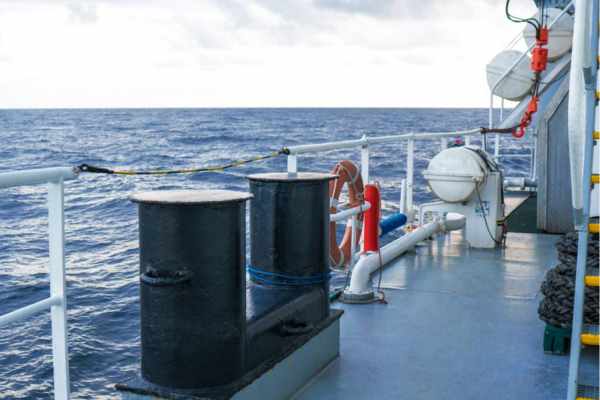Life rafts might seem invisible in our daily lives, but in the world of seafaring, they are the silent saviors. Ensuring these life rafts meet the SOLAS (Safety of Life at Sea) standards isn’t just a precaution, it’s a must for survival. These standards serve as a guidepost, making the difference between a successful rescue and a maritime disaster.

How are Life Rafts Made?
Ever thought about what makes a life raft safe and reliable? SOLAS has set some stringent rules for that. Life rafts need to be sturdy and inflatable, able to withstand the toughest storms at sea. The raft’s canopy is like an umbrella, shielding those on board from the harsh winds, heavy rain, and blazing sun.
A life raft should be big enough to accommodate a certain number of people but still small enough to be stored easily on a ship. And in emergencies, time is of the essence – so these life rafts must inflate quickly to ensure a fast evacuation.
What’s Inside a Life Raft?
Life rafts are like mini survival packs floating on the sea. SOLAS requires them to carry necessary life-saving equipment. This can include additional lifeboats if needed. There are also sea anchors to keep the raft stable in rough waters and prevent it from drifting away.
One key feature of a SOLAS-compliant life raft is a well-functioning painter system. Imagine a robust rope, attached to the raft, allowing it to be tied to a ship or another floating object during rescue operations. The painter line needs to be long enough to cover the distance from where it is stored to the waterline when it is deployed.
Maintenance and Checks
Keeping a life raft ready for emergencies isn’t a one-and-done deal. SOLAS requires regular checks and servicing. Certified professionals or authorized service providers must conduct these checks at set intervals. These checks include inspecting the raft’s inflatable structure, the durability of the canopy, and the working condition of all equipment. Any problems found should be fixed immediately to stay within compliance.
Why Life Raft Drills Matter
Practice leads to perfection, and this holds true for life rafts as well. SOLAS requires regular drills to ensure both passengers and crew are well-prepared for emergencies. These drills teach people how to get on board, launch the raft, and use its life-saving equipment. It’s also an opportunity to test the raft’s readiness and make sure everyone can get on board safely and swiftly.
SOLAS Compliance is Crucial
Following SOLAS requirements is not just about ticking off a checklist. It’s about promoting a culture of safety at sea that puts human life first. Adherence to these standards ensures that life rafts are always ready to perform during sea emergencies. By following these regulations, ship operators show their commitment to protect lives and prevent mishaps from turning into major catastrophes.
Whether you’re operating a passenger ship or a cargo vessel, SOLAS sets the safety norms. Understanding and following these regulations is not just important; it’s vital for safe travels on our vast oceans and waterways.
Frequently Asked Questions
- What’s the purpose of a life raft? A life raft provides a safe and secure place for passengers and crew during maritime emergencies until help arrives.
- What are some key SOLAS requirements for life rafts? Key requirements include specific design and build criteria, essential life-saving equipment, and regular maintenance and checks.
- Why are life raft drills necessary? Life raft drills ensure passengers and crew are familiar with how to use the life raft and its equipment. This ensures everyone can safely get on board in case of an emergency.
- What is the role of the painter system in a life raft? The painter system, a strong line attached to the raft, helps secure it to a ship or another floating object during rescue operations.
- Why is it important to follow SOLAS regulations? SOLAS compliance ensures that life rafts and other safety equipment are designed, maintained, and used effectively, thus increasing the chances of survival during sea emergencies.
